

Tea Ceremony
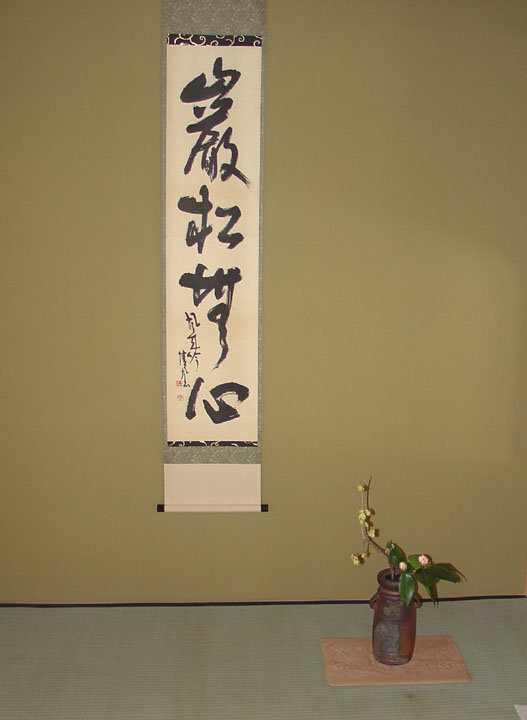
corner of the tea house
Chanoyu, also known as sadŏ, or 'the way of tea’, dates back to the Nara period (710—94), when meditating Buddhist monks used it to promote alertness. By the 14th century the tea ceremony had developed into a highly elaborate and expensive pursuit for the aristocracy.
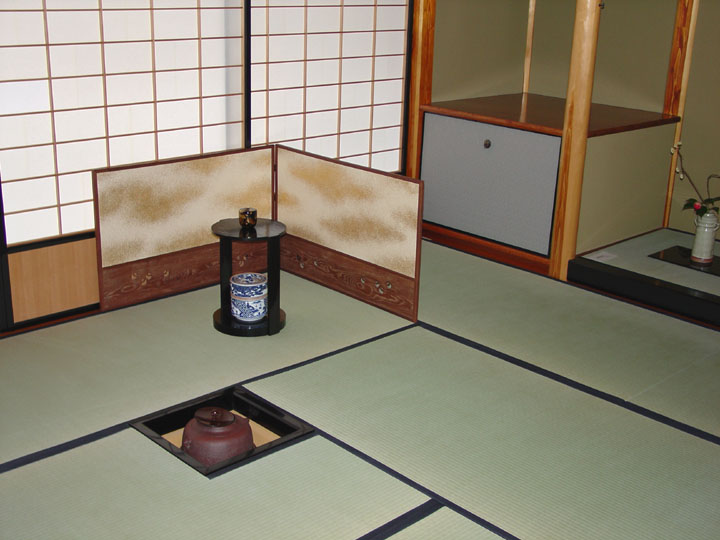
the area for the tea ceremony
In the 16th century, the tea master Sen no Rikyu (1522—91) established a new aesthetic in the tea ceremony, replacing the over-refined artifice then in vogue with a spartan aesthetic, using utensils that echoed the irregularities of the natural world. Other tea masters took different approaches, and today the tea ceremony can be divided into the three Senke schools (Ura, Omote and Mushakoji) and other influential schools such as Enshu, Yabunouchi and Sohen.
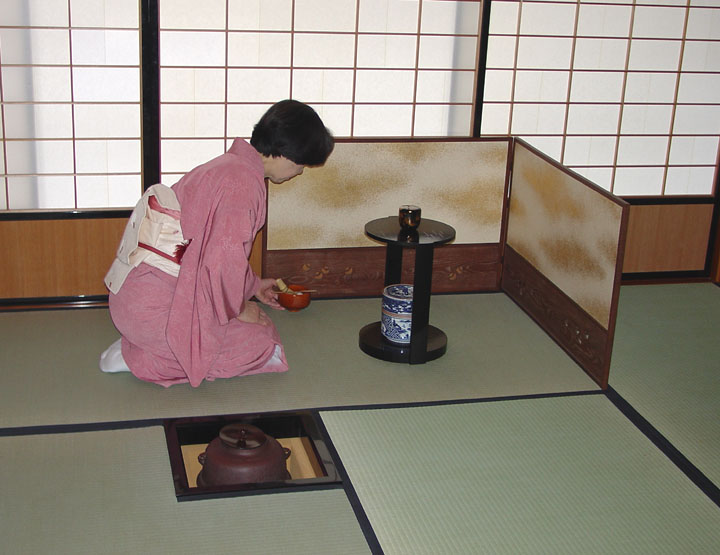
preparing for the tea ceremony
The traditional setting for the tea ceremony is a thatched teahouse in a landscaped garden. The preparation and drinking of the tea is conducted according to a highly stylized etiquette, and the mental discipline involved was once an essential part of the training of a samurai. Novices tend to find the proceedings fatiguing, and connoisseurs maintain that full appreciation of the art takes years of training and reflection.

bowl for preparing the green tea
A classic treatment of this subject, written with precision and devotion, is The Book of Tea by Okakura Kakuzŏ.
Text from Lonely Planet guide book
The Tea Ceremony
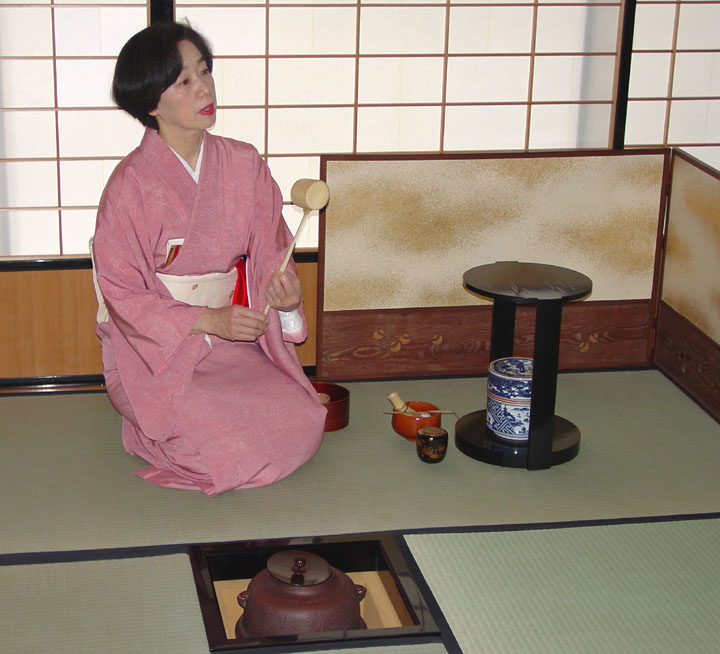
all is prepared
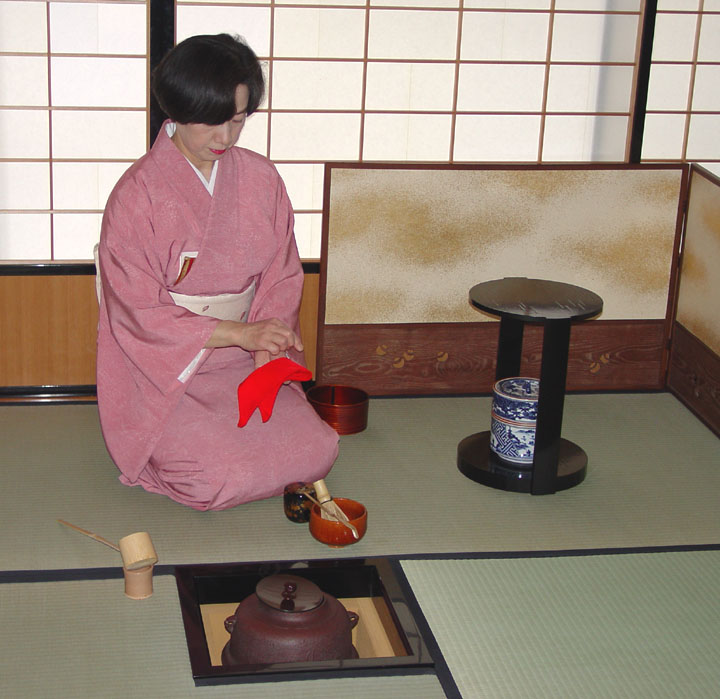
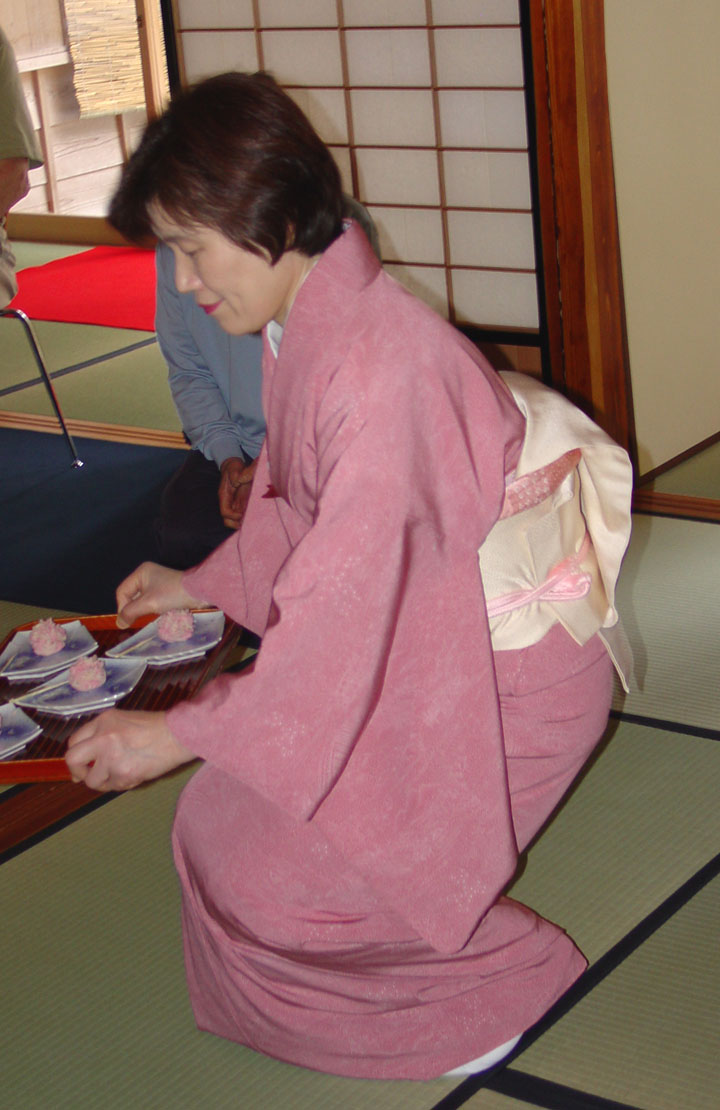
serving the rice cakes
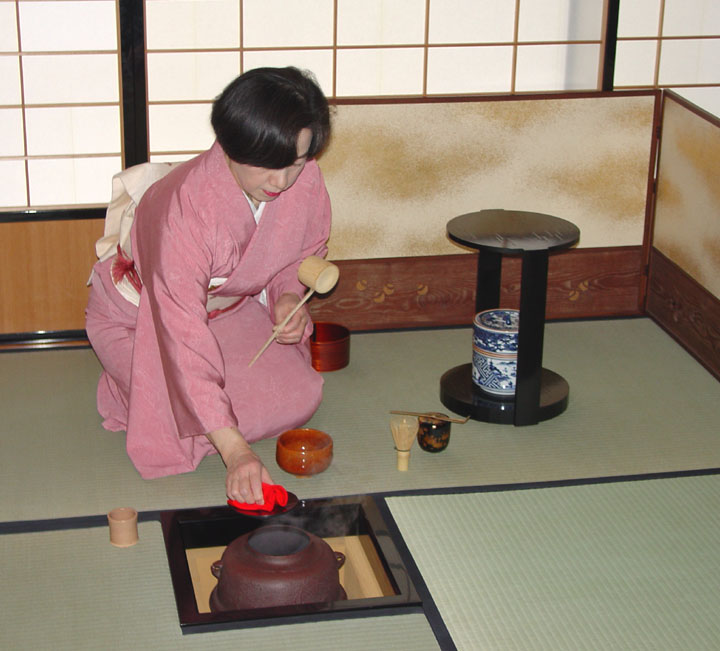
getting the hot water from the pot
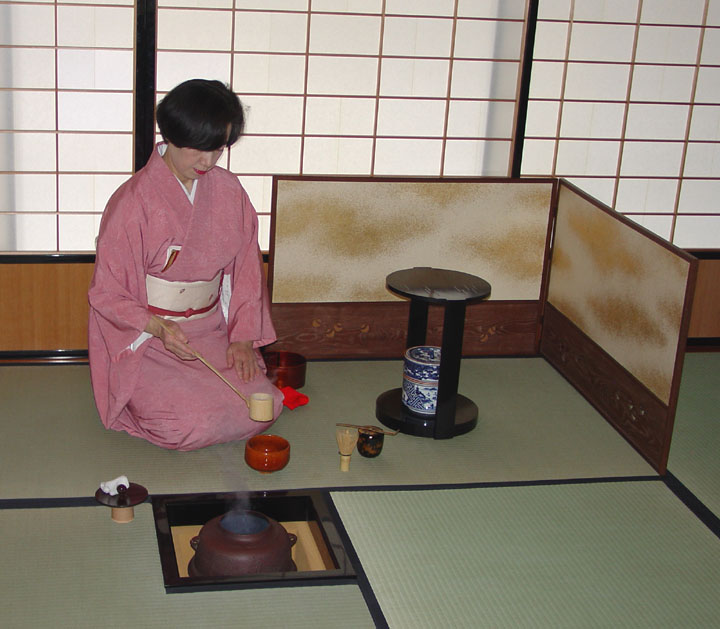
putting the water into the bowl
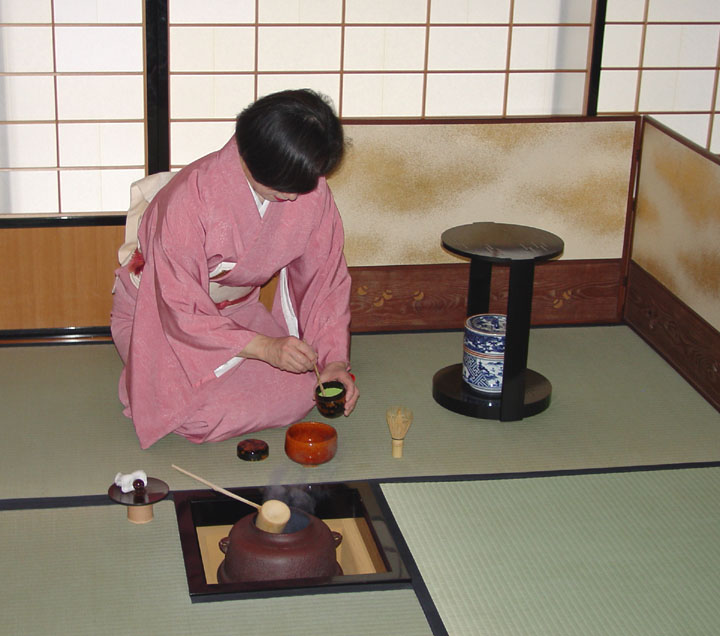
adding the tea leaves
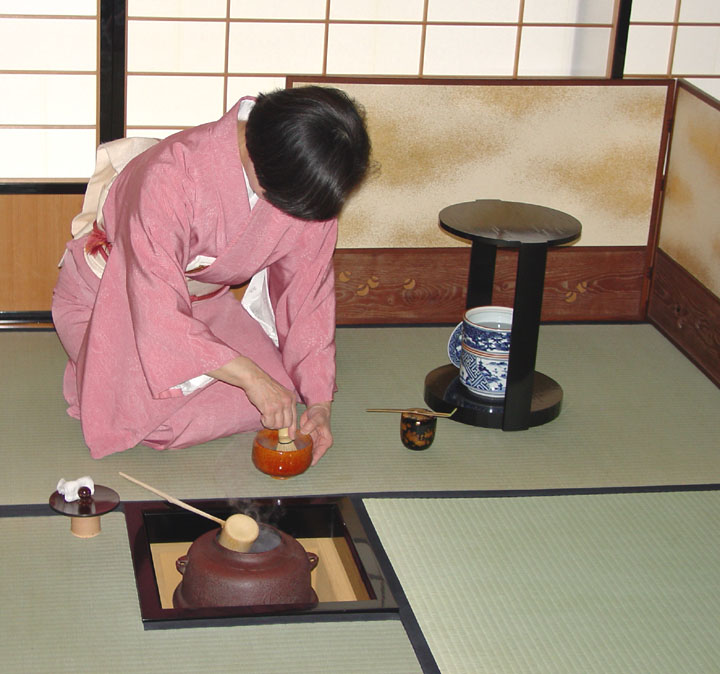
muddling the tea leaves with the hot water
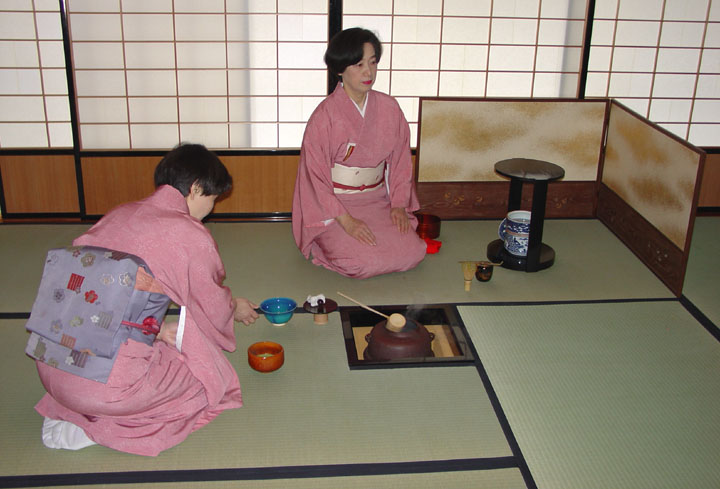
serving the tea
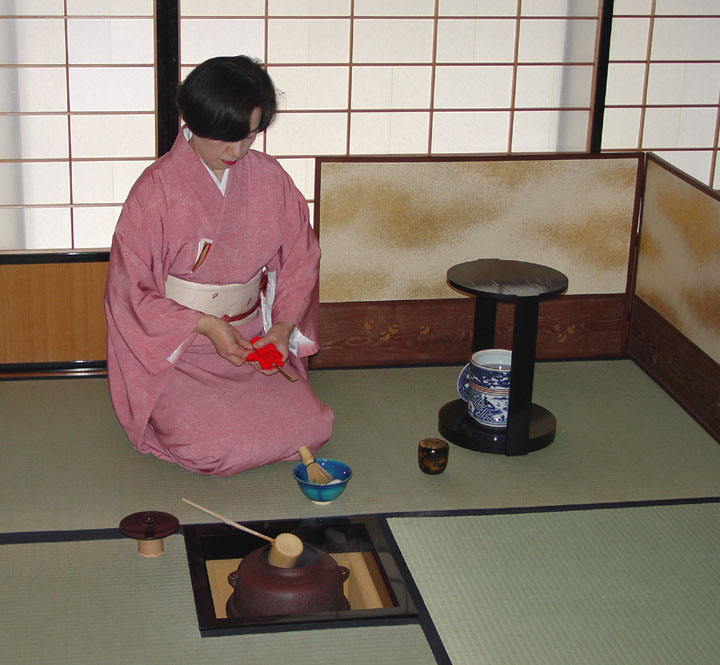
completed
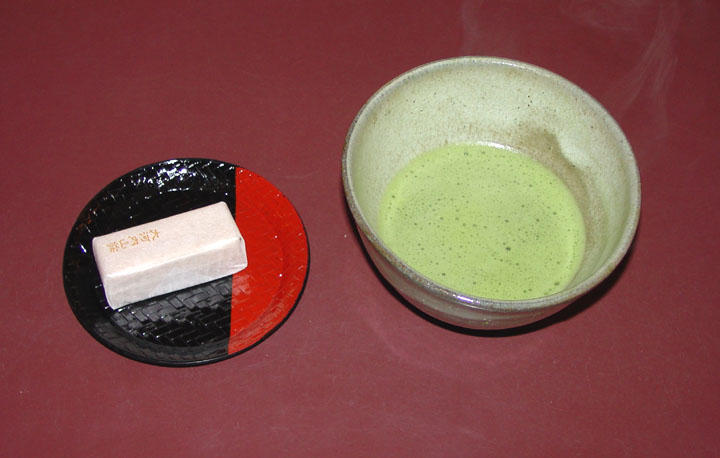
the green tea with the tea cake
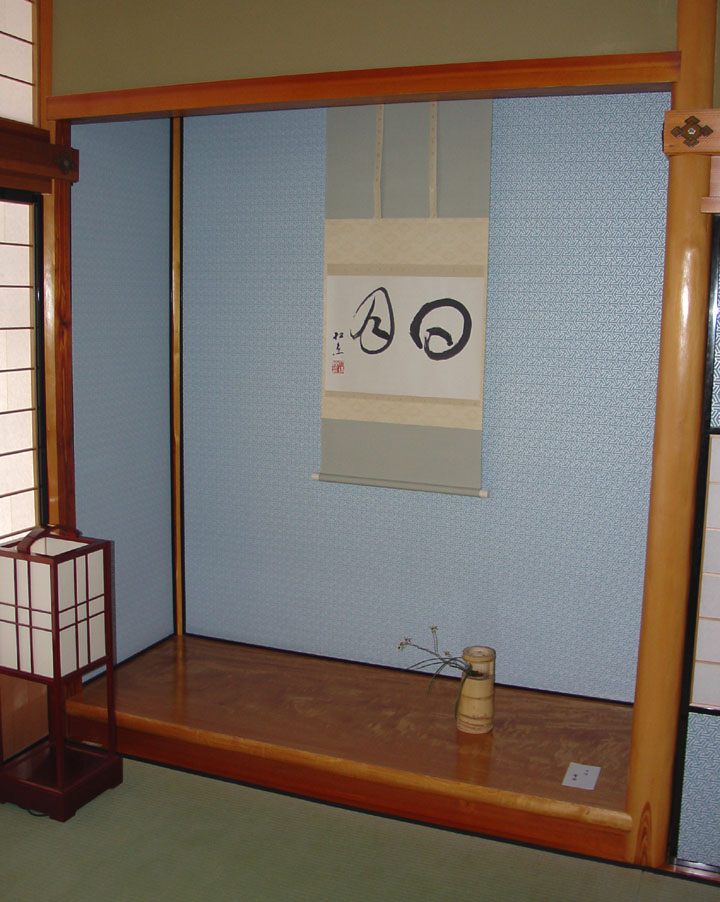
the tea room corner
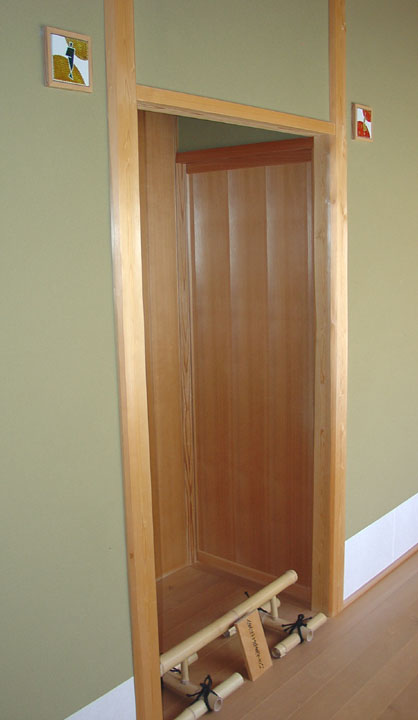
forbidden entry
(signified by the low bamboo trestle)